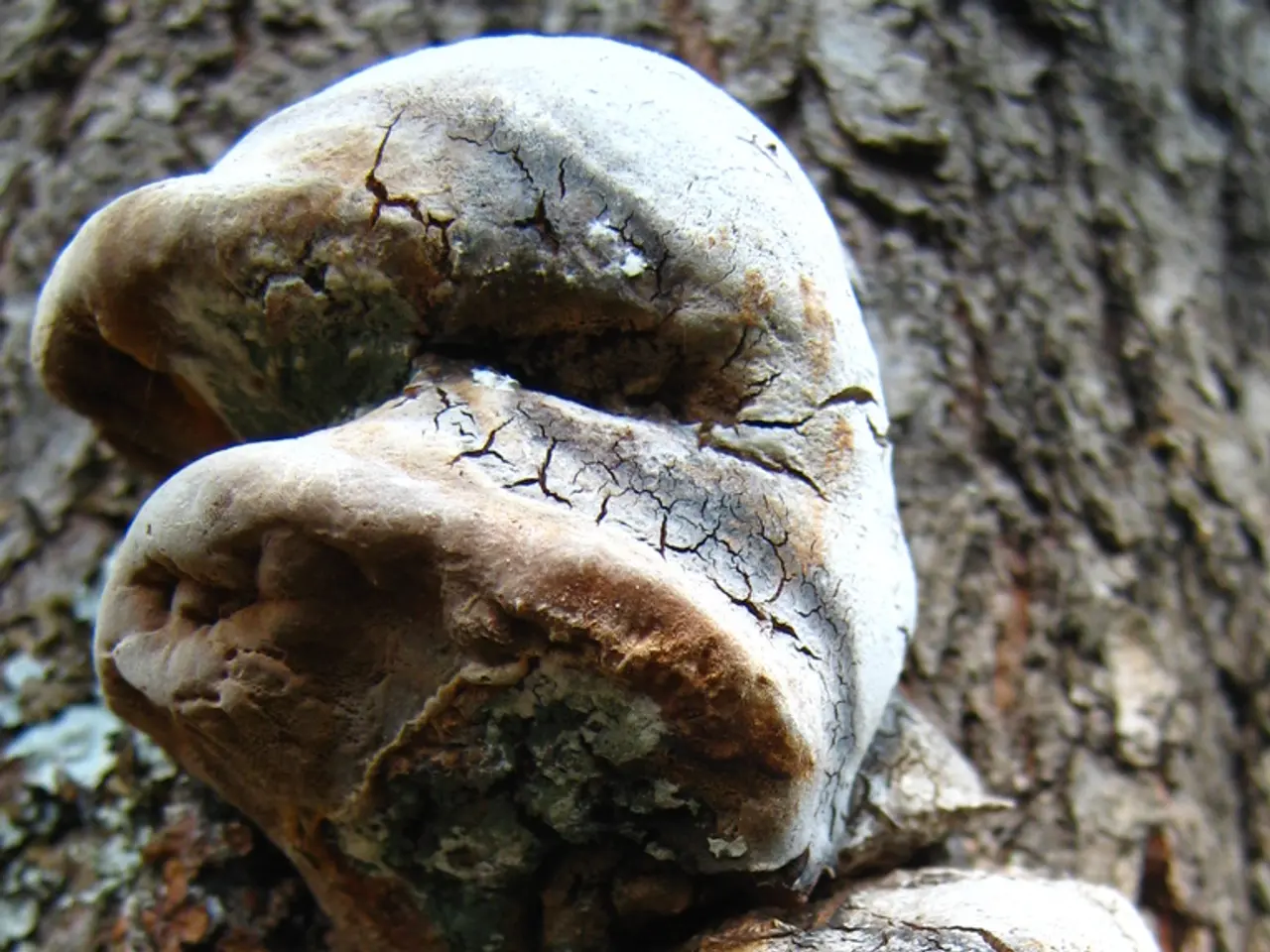Histoplasmosis Exploration: Understanding Causes, Identifying Risk Factors, and Discovering Treatment Options
Straight Talk: Get the Lowdown on Histoplasmosis
Histoplasmosis, a fungal infection, can flare up without a peep or mimic symptoms like pneumonia. Here's the lowdown, including cause, risk factors, and treatments you need to know.
The Big Question: What causes it and how is it treated?
Histoplasmosis occurs when inhaling microscopic fungal spores. Common inclusion spots for these spores are caves, old buildings, or chicken coops. Those working in such places like archaeologists, construction workers, and farmers, face a higher risk.
Risk Factors:
- Geography: Primarily found in the Mississippi, Missouri, and Ohio River valleys, the fungus also affects Latin America and Africa.
- Environmental Exposure: Caves, old buildings, chicken coops, and areas with bird or bat droppings can put you at risk.
- Immunocompromised Individuals: These individuals, like the elderly, HIV patients, and others with weakened immune systems, may experience severe forms of the infection.
Symptoms:
When symptoms show, they typically resemble the flu—body aches, chest pain, chills, cough, fatigue, fever, and headache. Symptoms may appear 3-17 days after exposure. If symptoms persist longer than 4 weeks, antifungal medications may be necessary.
Chronic Histoplasmosis:
Chronic histoplasmosis develops when the immune system is suppressed due to illnesses like HIV. Symptoms can include a cough, low-grade fever, night sweats, shortness of breath, weight loss, and severely affected lung functioning.
Disseminated Histoplasmosis:
A more severe form of histoplasmosis, disseminated histoplasmosis, can affect multiple organs beyond the lungs. Symptoms include gastrointestinal bleeding, headaches, low blood pressure, shortness of breath, swollen spleen and liver, ulcers in the mouth and lips, fever, fatigue, and low blood counts. If this occurs, hospitalization and antifungal medication are usually needed.
Ocular Histoplasmosis:
Sometimes histoplasmosis can travel to the eye, causing ocular histoplasmosis syndrome (OHS). OHS is a leading cause of vision loss in individuals aged 20 to 40 in the U.S. Symptoms typically develop decades following initial infection and may cause changes in vision, such as wavy lines or blind spots.
Diagnosis:
A doctor will ask questions about symptoms, occupation, travel history, and any environmental exposures. Blood or urine tests, imaging scans, and other methods may be used to diagnose the illness.
Treatment:
Mild cases usually heal on their own with rest, plenty of fluids, and over-the-counter pain medication. Severe cases may require antifungal medications, oxygen therapy, intravenous medications, or laser surgery to destroy damaged retinal tissue.
Sources:
- https://www.ncbi.nlm.nih.gov/pmc/articles/PMC1672298/
- https://www.cdc.gov/fungal/diseases/histoplasmosis/index.html
- https://www.optometry.org/patients-citizens/disease-conditions/histoplasmosis
- https://www.healthline.com/health/histoplasmosis#causes
- Science has also delved into the realms of respiratory conditions, such as pneumonia, and histoplasmosis, highlighting their similarities and differences in symptoms and treatments.
- Workplace-wellness initiatives in various sectors, including construction, archaeology, and farming, should include information about the risks associated with respiratory conditions like histoplasmosis.
- Beyond histoplasmosis, other medical conditions like chronic diseases, cancer, and neurological disorders must also be addressed in health-and-wellness discourses.
- Fitness-and-exercise routines, a key component of health-and-wellness, can help boost the immune system in managing chronic diseases like chronic histoplasmosis.
- Sexual-health education is equally important, addressing a different aspect of family-health, ensuring the prevention and treatment of sexually transmitted infections and diseases.
- Mental-health issues, such as stress, anxiety, and depression, are often linked with chronic diseases and require therapies-and-treatments to address.
- Men's-health discussions often overlook skin-care, a crucial aspect of overall health, with proper care potentially reducing the occurrence of skin-conditions.
- For aging individuals, awareness of therapies-and-treatments for age-related diseases, like cardiovascular-health issues and skin-conditions, is essential to maintaining their health.
- Women's-health discourses should include topics such as reproductive health, pregnancy, and breast health, as well as weight-management and hormonal imbalances.
- Parenting involves not only physical care but also addressing the emotional and psychosocial well-being of children, including mental-health and sexual-health education.
- In the realm of alternative therapies, CBD oil has shown promise in managing neurological disorders, such as epilepsy and multiple sclerosis, and skin-conditions like psoriasis.
- Medicare policies should cover treatments for various medical conditions, including histoplasmosis, chronic diseases, and cancer, to ensure accessible and affordable care for the elderly and those with weakened immune systems.
- Mobile health apps can provide valuable resources for both aging individuals and those with chronic conditions, offering reminders for medication, fitness routines, and appointments to help manage weight, cardiovascular health, mental health, and family-health.








